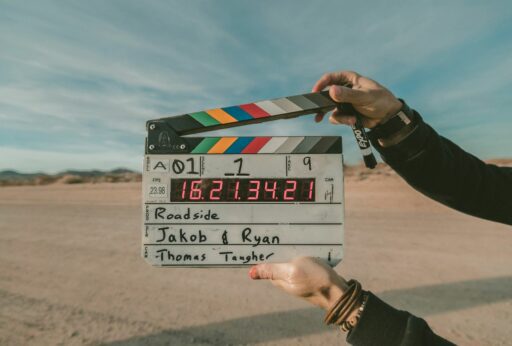The James Bond film series is an emblematic saga that has captivated audiences for decades. As the quintessential spy, James Bond has been portrayed by various actors, each bringing a unique flavor to the iconic role. From Sean Connery’s trailblazing performance to Daniel Craig’s gritty and modern interpretation, the franchise has evolved, reflecting the zeitgeist and cinematic trends of each era. This article delves into the evolution of James Bond movies, exploring how the character has been shaped by the actors, global events, and the changing landscape of espionage.
Key Takeaways
- Sean Connery set the standard for the James Bond character, blending charm, wit, and lethality against a Cold War backdrop.
- The persona of James Bond has evolved with each actor, reflecting global anxieties, cinematic trends, and incorporating humor and spectacle.
- Daniel Craig’s Bond era introduced a darker, serialized narrative that significantly impacted men’s style and pop culture.
- The Bond films have maintained a balance between gadget-driven escapism and realistic spycraft, influenced by Ian Fleming’s experiences and the real world of espionage.
- Post-Craig, the Bond franchise faces the challenge of redefining the character for a new generation while preserving its enduring legacy.
The Birth of an Icon: Sean Connery’s James Bond

Setting the Standard for 007
Sean Connery’s portrayal of James Bond set a high bar for the character’s style, sophistication, and on-screen presence. Bond’s iconic look and demeanor were established from the very beginning, resonating with audiences and setting a template for future portrayals. Connery’s Bond was not just about the suave exterior; his interpretation brought a blend of charm and danger that became synonymous with the role.
- Connery’s first appearance as Bond in "Dr. No" defined the character’s fashion sense.
- His performance balanced humor and seriousness, capturing Bond’s bon vivant persona.
- The actor’s influence extended beyond the screen, affecting men’s style and pop culture.
Connery’s Bond was a product of its time, reflecting the era’s attitudes and style. Yet, it also had a timeless quality that has made it a benchmark for all Bonds to come.
The films featuring Connery as 007, including classics like "From Russia with Love" and "Goldfinger", showcased a character that was both a product of the Cold War era and a figure of enduring appeal. His interpretation of Bond will always be associated with Sean Connery, the man who played the famous double agent on seven occasions.
The Blend of Charm, Wit, and Lethality
Sean Connery’s portrayal of James Bond set a high bar for the blend of charm, wit, and lethality that would become the hallmark of the character. His ability to deliver biting lines with a resonant menace was as crucial to the role as his suave demeanor and physical prowess. Connery’s Bond was a man of action as much as he was a man of words, navigating the dangerous world of espionage with an unrivaled elegance.
- Connery’s charm captivated audiences, making Bond an icon of style.
- His wit was sharp, often cutting through tense situations with ease.
- The lethality was always present, reminding viewers that Bond was a spy first and foremost.
The essence of Bond is a seamless blend of sophistication and danger, a combination that Connery embodied effortlessly. His interpretation laid the groundwork for all Bonds to come, each actor bringing their own flavor while maintaining the core elements that Connery established.
Influence of the Cold War Era
The Cold War era played a pivotal role in shaping the James Bond franchise, with the character of Bond emerging as a symbol of Western resilience in a time of geopolitical tension. The films, following the novels, captured the essence of the era’s anxieties and the dichotomy of good versus evil, as seen through the lens of espionage.
- The Bond novels and films mirrored the collective fears and aspirations of the post-war period.
- Bond’s adventures reflected the complexities of the Cold War, often pitting him against Soviet adversaries.
- The character’s evolution over time paralleled the shifting dynamics of global politics.
The allure of James Bond during the Cold War was not just in his escapades but in his representation of an idealized Western heroism. The franchise’s success is a testament to its ability to resonate with audiences facing the uncertainties of the era.
As the geopolitical landscape changed, so did the threats in the Bond universe, transitioning from Cold War tensions to more fantastical elements. This shift allowed the series to maintain relevance even as the public perception of global threats evolved.
The Evolving Persona of James Bond

Transitioning Through Actors and Eras
As the James Bond franchise progressed, the mantle of 007 was passed from one actor to another, each bringing their own unique flavor to the iconic role. The adaptability of Bond to different eras and audiences is a testament to the character’s enduring appeal. From the suave and sophisticated demeanor of Sean Connery to the more humorous and light-hearted approach of Roger Moore, and eventually to the gritty realism introduced by Daniel Craig, the evolution of Bond has been both a reflection of and a response to the changing times.
The Bond films have not only entertained but also mirrored the changing dynamics of the world stage, evolving alongside global anxieties and cinematic trends.
The search for a new Bond often sparks widespread speculation and debate, with factors such as age, style, and the current cultural climate influencing the decision. The idea of casting a very young actor to ensure a long tenure as Bond has been considered, highlighting the franchise’s forward-looking approach to its legacy. As we anticipate the next iteration of Bond, the series stands as a collection of action-packed assassin movies, with each film contributing to the thrilling saga of cinema’s most famous spy.
Reflecting Global Anxieties and Cinematic Trends
The James Bond franchise has always been a mirror to the world’s tensions and the film industry’s evolving appetites. The Cold War backdrop gave way to more fantastical threats, reflecting contemporary global anxieties and the cinematic trend towards larger-than-life villains. This shift is evident in the series’ progression from grounded espionage to high-stakes global crises.
As the series evolved, so did its villains, often embodying the fears of their time. The transition from the tangible Cold War threats to more abstract dangers like cyberterrorism and environmental catastrophes can be seen as a response to changing global concerns.
The Bond films have not only adapted to the times but have also influenced the action genre, setting trends for other movies to follow.
The franchise’s ability to adapt is also reflected in its production techniques, moving from the classic film to embracing digital cinematography, which has become a norm in the industry.
The Role of Humor and Spectacle in Bond Films
The James Bond franchise has long been celebrated for its unique blend of humor and spectacle, elements that have become as integral to the series as the suave spy himself. The films’ ability to balance thrilling action with comedic moments has played a significant role in their enduring appeal. From the gadgetry popularized by "Goldfinger" to the more lighthearted portrayal of Bond by Roger Moore, the series has demonstrated a remarkable capacity to evolve with its audience’s tastes while maintaining its core identity.
Humor in Bond films often arises from the protagonist’s witty one-liners, the absurdity of certain situations, or the over-the-top characteristics of villains and henchmen. This levity provides a counterbalance to the high-stakes tension and allows for a more enjoyable cinematic experience. The spectacle, on the other hand, is delivered through elaborate set pieces, exotic locations, and the aforementioned gadgetry that Bond employs in his missions.
While some entries in the series have aimed for a more grounded approach, the majority of Bond films embrace their larger-than-life aspects, creating memorable scenes that enhance the movie-going experience.
The following list highlights the dual role of humor and spectacle in the Bond films:
- The deft combination of humor, spectacle, and villainy
- The shift from Cold War realism to fantastical threats
- The varying degrees of humor and spectacle across different actors’ portrayals
- The balance between traditional spycraft and reliance on gadgets
The Modern Bond: Daniel Craig’s Reinvention

A Darker, More Serious Direction
With the arrival of Daniel Craig, the James Bond franchise steered towards a grittier and more intense narrative, a stark contrast to the suave and often light-hearted portrayals of the past. The shift was a deliberate move to modernize the character, aligning him with contemporary expectations of action heroes and the complex world they navigate.
- The introduction of a more flawed and vulnerable Bond
- A focus on character development and emotional depth
- Action sequences that emphasize realism over spectacle
This new direction was not without its critics, as some long-time fans missed the traditional escapism and charm that characterized earlier films. However, the critical and commercial success of films like ‘Casino Royale’ and ‘Skyfall’ validated this bold change. The darker tone also allowed for a deeper exploration of Bond’s psyche, peeling back layers to reveal the man behind the code number.
The Craig era of Bond films has redefined the meaning of a ‘license to kill’, infusing it with a weight and consequence that was previously unexplored.
Impact on Men’s Style and Pop Culture
Daniel Craig’s tenure as James Bond not only redefined the character but also had a significant impact on men’s style and pop culture. His portrayal brought a modern edge to the 007 aesthetic, influencing fashion trends and becoming a benchmark for cool. Craig’s Bond was often seen in sleek suits and casual wear that blended luxury with accessibility, making his style aspirational yet attainable for fans.
The clothing brands featured in Craig’s films ranged from high-end designers to more accessible labels, reflecting a shift towards a more inclusive approach to fashion. Fans could spot Bond’s outfits and immediately seek them out, with some items selling out rapidly after appearing on screen. This phenomenon was partly fueled by the digital era and the power of social media, which allowed for instant identification and discussion of Bond’s wardrobe.
The Bond franchise has always been a trendsetter, but Craig’s era took this to new heights. His influence extended beyond the screen, affecting how men approached personal style and leaving a lasting imprint on the fashion industry.
The legacy of James Bond’s influence on pop culture is undeniable. From the iconic opening sequences to the memorable theme songs, the franchise has cemented its place in the collective consciousness. Craig’s contribution to this legacy is significant, with his portrayal of Bond shaping not just cinematic trends but also the broader landscape of men’s fashion and lifestyle.
The Serialized Story of Craig’s Bond Era
Daniel Craig’s tenure as James Bond marked a significant departure from the episodic nature of previous films. Craig’s Bond’s story is a tightly serialized canon that delves into 007’s past, psychology, and humanity. In No Time To Die, James sacrifices his life to keep the world safe, a narrative choice that was unprecedented in the franchise’s history.
Craig’s portrayal brought a depth to the character that was both unexpected and refreshing. His Bond was not just a suave spy but a complex individual shaped by his experiences.
The serialized nature of Craig’s films allowed for a more nuanced development of characters and relationships. It also meant that each film was not just a standalone adventure but a chapter in a larger story. This approach to storytelling was a bold move for the franchise and one that has set a new standard for future Bond films.
- Casino Royale introduced a raw, unrefined Bond at the start of his career.
- Quantum of Solace continued his personal vendetta.
- Skyfall explored Bond’s origins and his relationship with M.
- Spectre connected past villains and introduced the shadowy organization behind them.
- No Time To Die concluded the arc with Bond’s ultimate sacrifice.
James Bond’s Relationship with Real-World Espionage

From Gadgets to Spycraft: The Spy Who Loved Realism
The James Bond franchise is renowned for its imaginative gadgets, which have become as iconic as the character himself. Developed by Q Branch, these devices often defy the laws of physics, yet they serve a greater narrative purpose, adding to the thrill and allure of Bond’s escapades. Over time, the series has transitioned from these fantastical elements to a more realistic portrayal of espionage.
In the pursuit of a more authentic spycraft, the Bond films of the 2000s and 2010s leaned into a grounded version of the secret agent. This shift mirrored the American cinema’s trend towards realism and resulted in a series of movies that, while successful, sacrificed some of the early films’ charm.
The evolution from over-the-top gadgetry to a focus on realistic spycraft reflects a broader cinematic trend and the changing expectations of audiences.
The table below outlines the transition from gadgets to realism in the Bond films:
| Era | Gadgetry | Realism |
|---|---|---|
| 1960s | High | Low |
| 2000s-2010s | Moderate | High |
This change not only affected the gadgets but also the storytelling, with films like "The Spy Who Loved Me" introducing concepts of international cooperation that would continue in subsequent entries.
The Influence of Ian Fleming’s Own Experiences
Ian Fleming’s tenure in World War II was pivotal in the creation of the iconic James Bond character. His direct exposure to intelligence work and covert operations during the war, particularly through his involvement with Operation Goldeneye and the 30 Assault Unit, provided a rich foundation for the spy’s origin story. Fleming’s personal experiences and keen observational skills, honed from his journalism career, infused the Bond novels with authenticity and detail.
Fleming’s own penchant for luxury, exotic locales, and high-stakes gambling seeped into the novels, offering readers a glimpse into a world of intrigue and opulence. The specificity with which he described Bond’s preferences, from his signature cocktails to the make of his car, added a tangible realism to the fictional world.
The drive to create a character that would stand the test of time was fueled by Fleming’s desire to emerge from his brother Peter’s literary shadow. The wartime backdrop provided a wealth of material, and Fleming’s ambition was realized in the form of James Bond – a character that would define the spy genre and captivate audiences for decades.
Fleming’s legacy, interwoven with his own life experiences, reflects the cultural shifts from the 1950s to the present. His creation not only established him as a literary icon but also offered a form of escapism and adventure that resonated with readers and moviegoers alike.
Bond’s Cinematic Journey Amidst Changing Geopolitical Landscapes
The James Bond franchise has adeptly navigated the shifting sands of global politics and public sentiment. Bond’s adaptability is a testament to the character’s enduring appeal. From the Cold War tensions reflected in early films to the post-9/11 world that influenced the grittier tone of Daniel Craig’s tenure, the series has mirrored real-world events in its storytelling.
The evolution of Bond’s world is not just about the changing villains and threats, but also about the spy’s response to these challenges.
While the gadgets and escapades have remained a staple, the series has occasionally embraced a more realistic approach to spycraft, as seen in Casino Royale. This balance between fantasy and realism has allowed Bond to remain relevant, even as the nature of espionage and global threats have evolved.
- From Russia With Love
- For Your Eyes Only
- Casino Royale
These films, among others, showcase a Bond who can navigate both the outlandish and the plausible, ensuring the franchise’s longevity.
The Future of 007: Post-Craig Speculations

The Challenge of Redefining Bond for a New Generation
The task of redefining James Bond for a new generation is a formidable one, with the character’s enduring appeal resting on a delicate balance between tradition and innovation. The next iteration of 007 will need to honor the past while boldly stepping into the future, ensuring that Bond remains relevant in a rapidly evolving cultural landscape.
- The portrayal of Bond’s character traits and values
- The selection of a new actor to embody 007
- The adaptation of storytelling to reflect contemporary issues
The James Bond franchise has consistently demonstrated a capacity for reinvention, navigating shifts in audience expectations and cinematic styles. The upcoming Bond era presents an opportunity to redefine what it means to be a hero in the modern world, while retaining the essence that has made the character iconic.
As the franchise prepares to introduce a new face of espionage, the anticipation and speculation surrounding the next Bond are as intense as the missions the character undertakes. The producers face the challenge of casting a new lead who can carry the weight of the role and resonate with a diverse global audience. The narrative direction of the upcoming films will also be crucial, as they must strike a balance between the classic Bond formula and fresh, innovative storytelling that reflects the complexities of the 21st century.
Potential Directions for the Next Bond Actor
As the search for the next James Bond intensifies, speculation and anticipation build around who will step into the iconic shoes of 007. The choice of actor will undoubtedly shape the franchise’s future, steering its thematic focus and stylistic approach. The frontrunners, each with their own unique appeal, present a range of possibilities for the character’s evolution.
- Lashana Lynch has already made her mark in the Bond universe, suggesting a future where diversity plays a more prominent role.
- The Irish actor, long-rumored and critically-acclaimed, could bring a blend of toughness and pathos to the role.
- A younger actor, perhaps in their twenties, offers the potential for a fresh, long-term portrayal, echoing the desires of casting directors for a malleable and enduring Bond.
The next Bond could be a pivot point for the series, reflecting contemporary values while maintaining the essence of the character that fans cherish.
Rumors of directors like Christopher Nolan taking the helm hint at a possible return to the roots of the Bond story, perhaps even a period setting. The direction taken will resonate with the current cultural zeitgeist, influencing not just the portrayal of Bond but the very fabric of his world.
Preserving the Legacy While Innovating the Franchise
The James Bond franchise stands at a pivotal crossroads, tasked with the dual mandate of honoring its storied past while boldly stepping into the future. The character’s ability to adapt and remain relevant is not just a feature of the series; it’s its lifeblood. As the world evolves, so too must Bond, reflecting the zeitgeist and the changing tides of global politics, technology, and societal norms.
- The enduring appeal of James Bond is rooted in a blend of timeless qualities and the capacity for reinvention.
- The challenge lies in striking a balance between the familiar and the innovative, ensuring that Bond continues to resonate with audiences of all ages.
- The next iteration of Bond must navigate a landscape that is both nostalgic and forward-looking, potentially exploring new genres or settings, such as a return to the ’60s, to captivate modern viewers.
The James Bond franchise remains a cinematic powerhouse, maintaining its relevance through adaptation and reinvention. As fans eagerly await Bond 26, the anticipation is a testament to the character’s universal appeal and the human desire for stories that speak to our deepest fears and highest aspirations.
Conclusion
The James Bond franchise has captivated audiences for decades, evolving with the times while maintaining the essence of Ian Fleming’s iconic creation. From the suave and charismatic Sean Connery to the gritty and complex portrayal by Daniel Craig, each actor has left an indelible mark on the character of 007. The series has reflected cultural shifts, embraced new styles, and tackled contemporary issues, all while delivering the thrilling espionage action fans expect. As the franchise stands at a crossroads post-Craig, the anticipation for the next chapter is palpable. The legacy of James Bond, much like the spy himself, endures – always adapting, never defeated, and eternally stylish.
Frequently Asked Questions
How did Sean Connery’s portrayal of James Bond set the standard for future 007 actors?
Sean Connery’s portrayal of James Bond set the standard with his blend of charm, wit, and lethality, creating a template for the character that balanced suave sophistication with ruthless efficiency. His performance during the Cold War era also resonated with audiences, as it reflected contemporary geopolitical tensions.
How have the James Bond films evolved over the years?
The James Bond films have evolved by transitioning through different actors and eras, reflecting global anxieties, cinematic trends, and technological advancements. The series has seen a shift from the Cold War themes of the Connery era to the more serious and darker tone of the Daniel Craig era, while also adjusting its portrayal of women and cultural sensitivity.
What impact did Daniel Craig’s Bond have on men’s style and pop culture?
Daniel Craig’s Bond had a significant impact on men’s style, with his tailored suits and modern aesthetic influencing fashion trends. His era coincided with the rise of social media, which amplified his influence on pop culture, as fans and fashion enthusiasts closely followed and emulated his on-screen wardrobe.
How did real-world espionage influence the James Bond movies?
Real-world espionage has influenced the James Bond movies by inspiring the use of gadgets, spycraft techniques, and the depiction of intelligence operations. The franchise has also drawn from the experiences of its creator, Ian Fleming, a former intelligence officer, to lend authenticity to the spy elements of the stories.
What challenges does the James Bond franchise face post-Daniel Craig?
Post-Daniel Craig, the James Bond franchise faces the challenge of redefining the character for a new generation while preserving its legacy. The next iteration of Bond will need to balance the expectations of long-time fans with contemporary cultural and cinematic shifts, finding a fresh angle to keep the series relevant.
Has the serialized storytelling of Daniel Craig’s Bond era changed the franchise?
Yes, the serialized storytelling of Daniel Craig’s Bond era has changed the franchise by providing a more cohesive narrative arc across his films. This approach allowed for deeper character development and a continuous storyline, culminating in Bond’s noble death in ‘No Time To Die,’ a significant departure from the character’s traditional invincibility.




